Last weekend, in the pitch darkness of an auditorium in the distinguished Metro Cinema (now Metro INOX), at Dhobi Talao, Mumbai, a tale of great beauty and great sorrow unfolded before me - the legend of the one and only Umrao Jaan.
Umrao Jaan, originally released in 1981, tells a story of a young girl named Ameeran, from the town of Faizabad, (Uttar Pradesh, India) who is sold into a kotha in the vibrant bazaars of Lucknow. Here, she is rechristened Umrao, and trained to become a courtesan (or tawaif in Urdu). At heart though, Umrao is a poet, finding solace in writing Urdu shayari and ghazals.
Set in the mid-nineteenth century colonial India, the movie unravels against the backdrop of the province of Awadh, in a society dominated by its rulers, the Nawabs, known for their patronage to art, literature, music and architecture. It portrays the life of tawaifs or courtesans who played an integral role in the economics and the cultural milieu of that period.
Though socially on the margins of society, they were curators of decorum, elegance, etiquette and refinement, or the adab, ada, tameez and tehzeeb (as referred to in Lucknowi Urdu).
The movie reflects this milieu, not just through the poetic dialogue between the protagonist and her lover, but also through the costumes, jewellery and objects used by the characters, reflective of the Mughal design aesthetic. Umrao’s proficiency at Kathak (a classical dance form typical to this region), her ghazals set to Indian classical tunes, and her timeless charm, laced with a hint of melancholy, keeps the audience glued to her every move.
The moving saga unraveled like a stunning composition of visual art, moving through a panorama of aesthetic dance performances, the rhythms of soulful music, and heart wrenching lyrics that have lingered in my mind long after the curtains dropped.
As I watched this performance spellbound, I was engulfed by a strong sense of déjà vu. I realised that despite not having seen the film earlier, Umrao Jaan has been a huge influence through my growing years. My dad, a movie buff and a huge fan of Umrao Jaan, introduced us to its music, which played with unfailing regularity on our home music system.
Now, as I heard the musical soundtrack fill the auditorium, my mind instantly recollected the symphonies of the sitar, the sarod and the ghungroo that have shaped my musical memory over the years. My lips moved spontaneously to its lyrics, most of which I had unconsciously memorised through the countless visitations of each song that echoed through our home.
Based on the Urdu novel ‘Umrao Jaan Ada’ by Mirza Hadi Ruswa, published in 1899, Umrao Jaan narrates the story from the lens of the protagonist, portraying her first as a poet and then a courtesan. Whilst many believe Umrao to be a fictional character, for lack of historical records, the author claimed his work to be a biography narrated to him by none other than the courtesan herself.
In the retelling of this tragic account in the cinema hall, Umrao’s moist kohl lined eyes haunt the audience with a silent plea against all the injustices she has borne at the hands of people she loved the most - her father, who failed to hunt her down after she was abducted as a child, her lover who did not have the courage to accept her in public, and her younger brother who shunned her when she finally returned home after decades; three weak men who could not stand up for Umrao Jaan when she needed them the most.
Behind the delicate beauty of a regal era, Umrao Jaan is a lament of a woman surviving the unfairness of a world shaped by patriarchy.
We may never be able to truly separate fact from fiction, but one one hand, Umrao Jaan remains a piece of art; a cinema of immense beauty, made with love and attention to detail and excellence in every aspect of filmmaking. On the other, the film is a classic legend of innocence lost, and of a life lived navigating the lack of acceptance by the very society that once brought Umrao to the doors of misfortune.
Either way, a timeless masterpiece.
Film Credits -
Written by - Muzaffar Ali, Javed Siddiqui, Shama Zaidi
Lyrics - Shahryar
Music -Mohammed Zahur Khayyam
Cinematography - Pravin Bhatt
Costume Designer - Subhashini Ali
Produced & Directed by - Muzaffar Ali
Umrao Jaan played by - Rekha
A warm welcome to all new subscribers. Every post I share is a labour of love and an attempt to share things I love. If you wish to support independent writing, buy me a book. I love connecting with my readers. Do share your thoughts in the comments section.



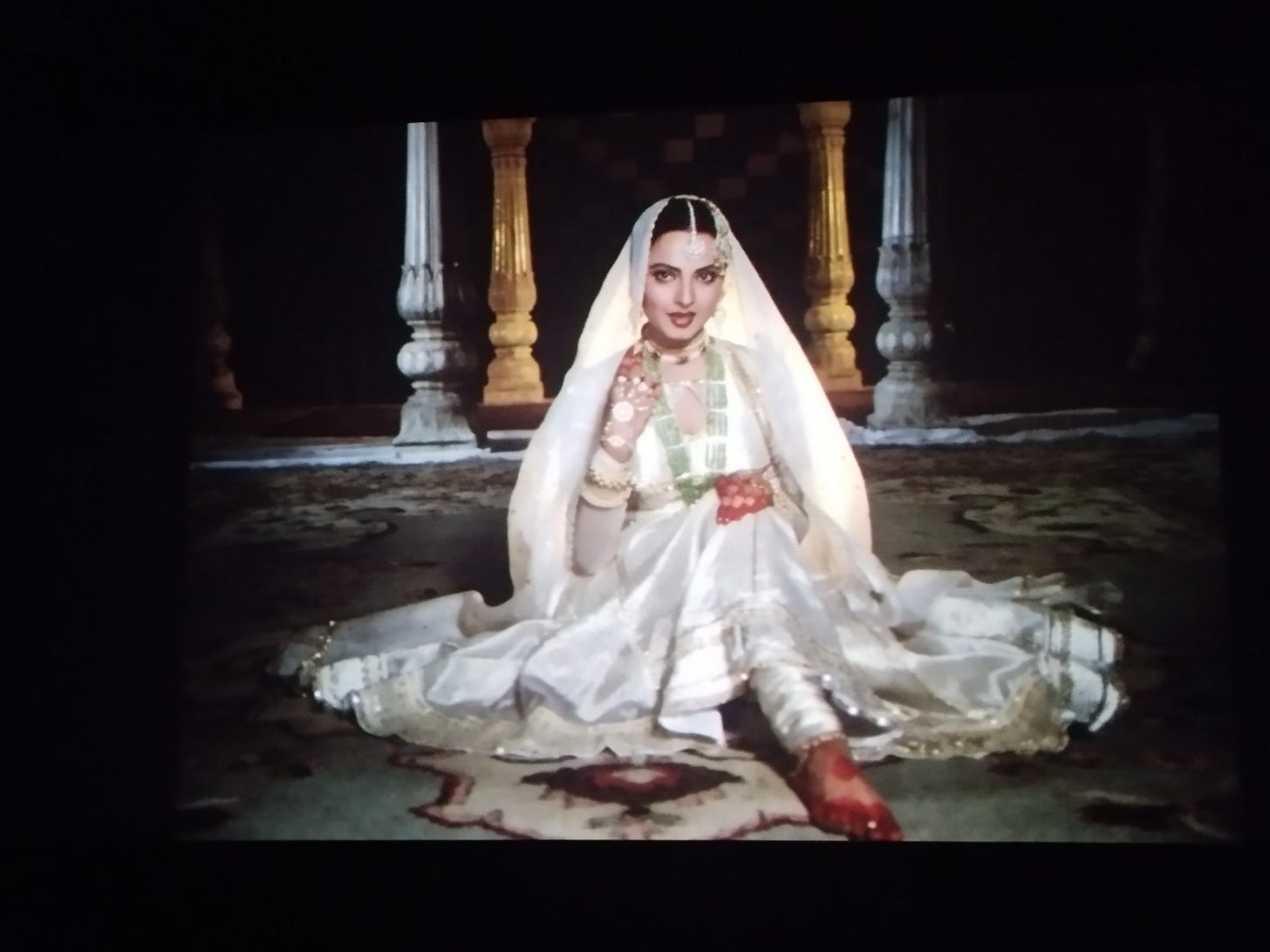
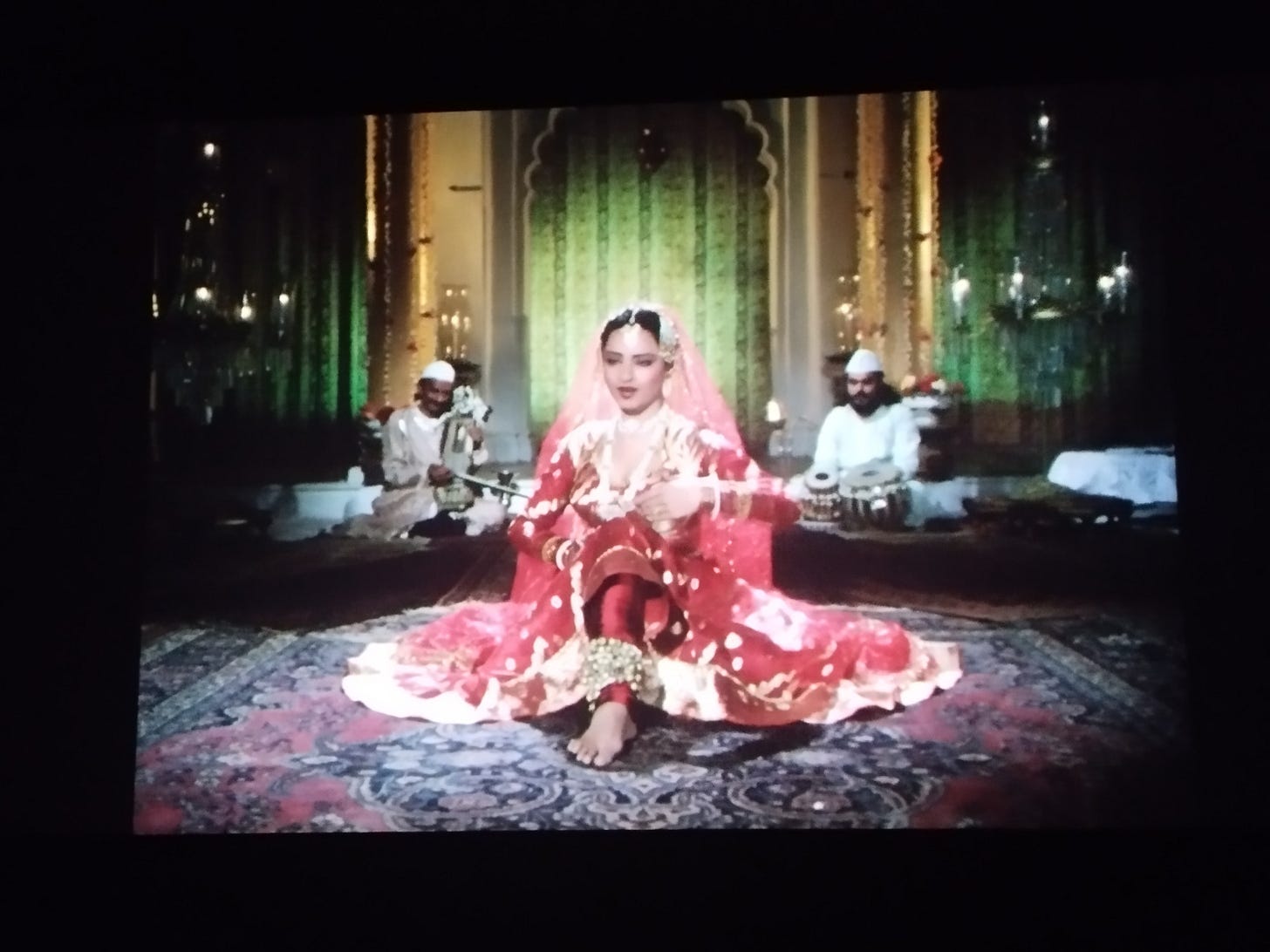
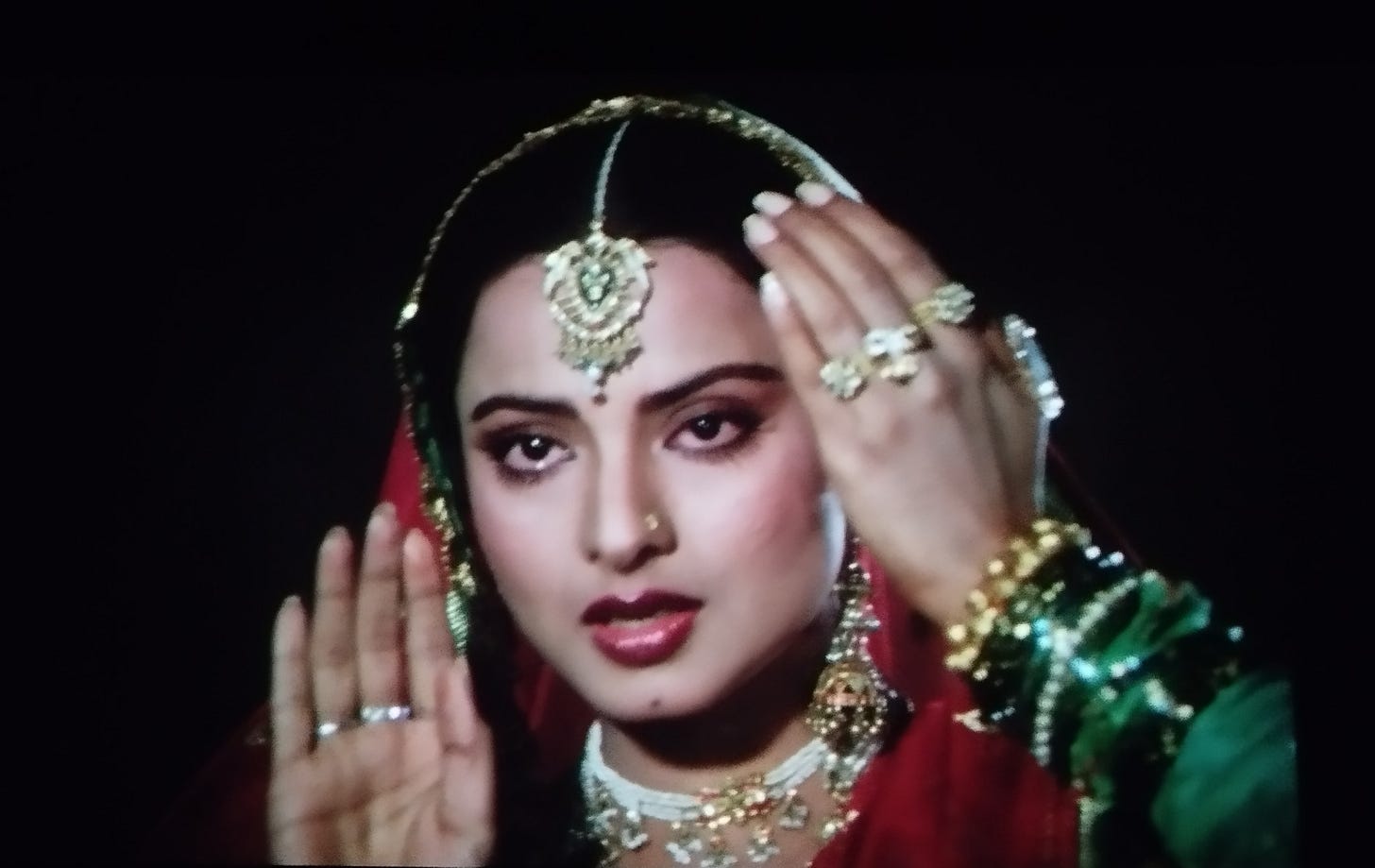
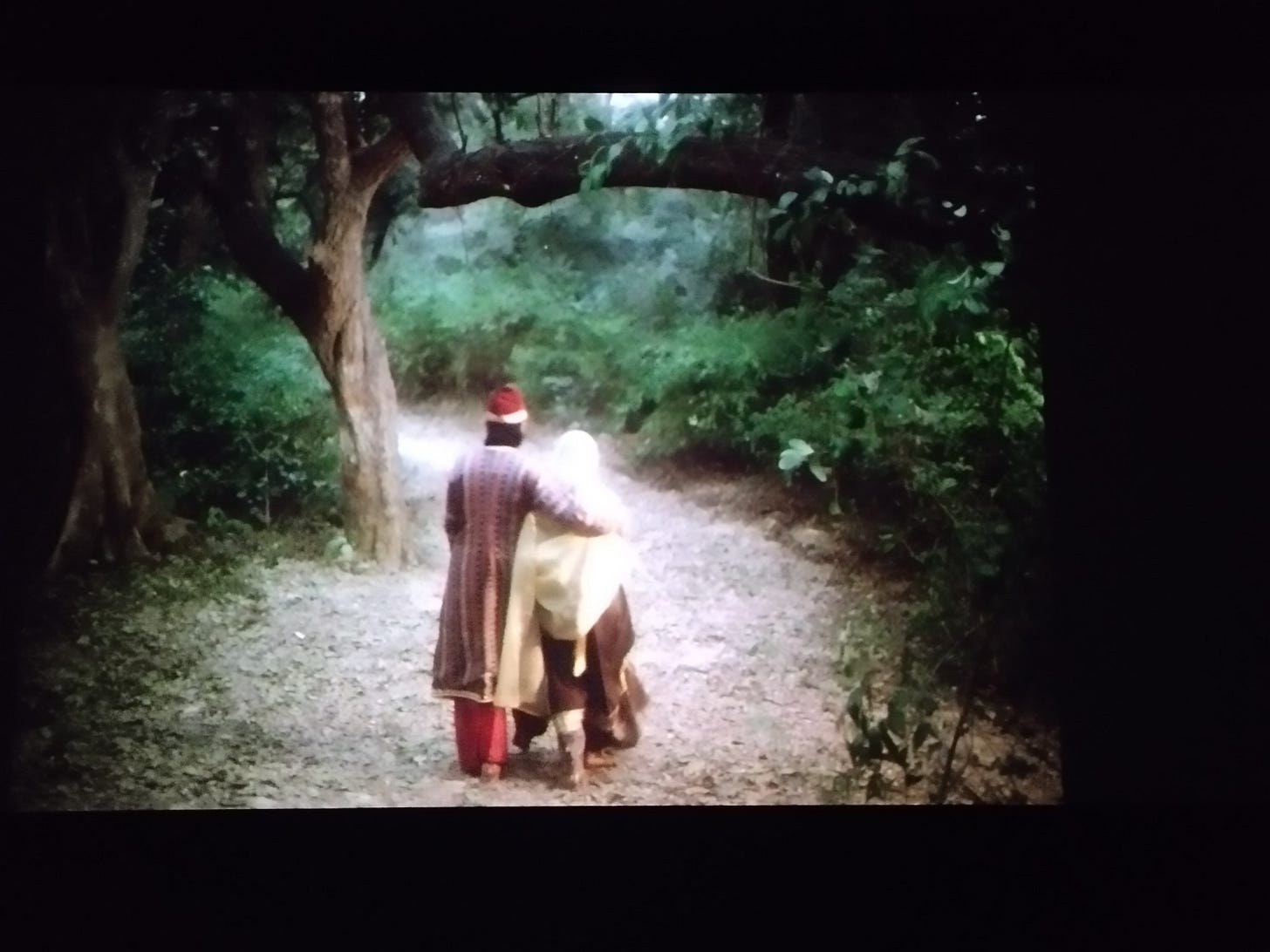
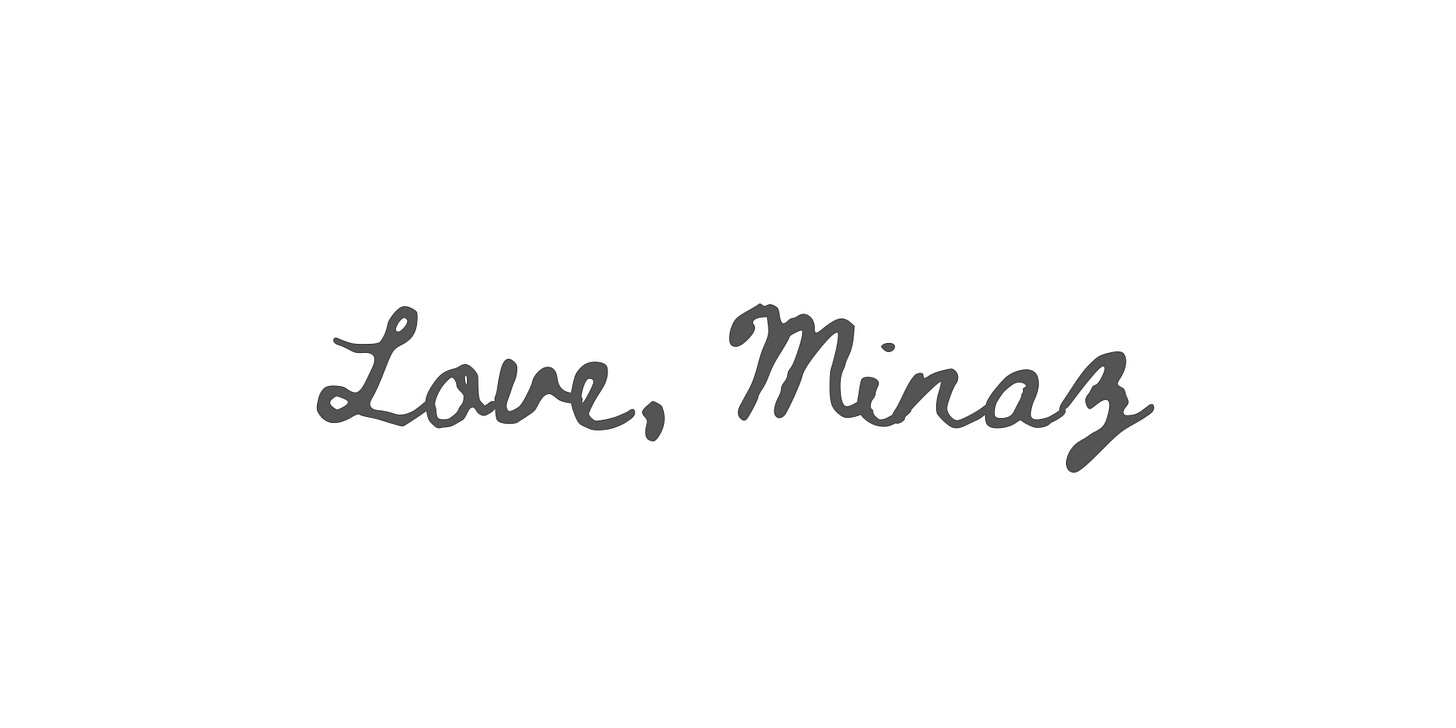
How very timely, I just finished writing about the tawaifs of Shahjahanabad and your piece arrives. Considering that 'Umrao Jaan Ada' was the first novel of Urdu I have huge respect for Mirza Hadi's story which must have come to him naturally from the day of his birth (1857) and the lyrics from Shaharyar saheb seem to have carried the pain and anguish of the divide ninety years later.
I entered the movie hall with the reluctance of not wanting to watch an old film about an unrelatable culture. I came out mesmerized by the cinematic experience. The ones who stood out for me were Rekha who played the character with immense grace and emotion and the grand costumes which actually lit up the canvas created by Subhashini Ali. The entire experience will always remain memorable for me .